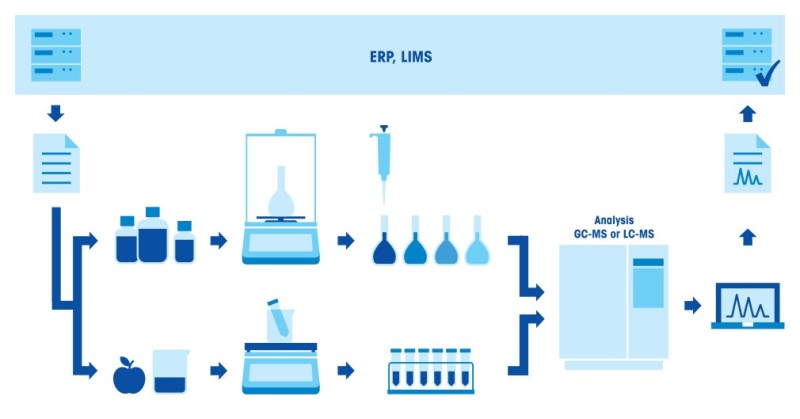METTLER TOLEDO (Switzerland) - Press Release: Consult METTLER TOLEDO's new application-based webpage "Pesticide Residue Testing – Accurate Standard Preparation" and discover a wealth of useful information including a free white paper about pesticide residue-testing, regulations, workflow challenges and solutions. Find out where and how accurate weighing in the laboratory comes into play. Watch the new video and discover our featured weighing solution, benefit from the practical tips in the FAQ section, and get a free white paper on how to enhance accuracy and productivity in standard preparation.
Pesticides are substances used to control pests and diseases in agricultural production. They kill, repel, or control insect pests, fugal, bacterial or virus pathogens, weeds or even mice or other animals to ensure optimal plant growth healthy crops, and a rich harvest. However, pesticides can also be potentially toxic to humans. To protect consumers, strict laws regulate the maximum residue level (MRL) of pesticides present. To comply with such limits and ensure food safety, residues must be regularly monitored.
Pesticide residues are analyzed by liquid or gas chromatography coupled with mass spectroscopy. They are identified and quantified by comparing the sample extract to a calibration standard solution. A major source of error in preparing calibration solutions are pipetting and the use of volumetric glassware. This source of error can be eliminated by switching to gravimetric solution preparation. Preparing standard solutions gravimetrically offers a higher accuracy, minimizes variability and increased throughput.
The comprehensive application page explains the challenges associated with residue testing, and it provides valuable advice for both traditional volumetric and gravimetric workflows to help ensure accurate, efficient analysis. All information is available on one easy-reference page so you can explore application science, important regulations for different world regions, and why gravimetric standard solution preparation helps to overcome the variability present in traditional volumetric workflows.
Additional topics include:
- Typical workflow illustrations
- Sound expert knowledge
- Video and FAQs
- Assistance and advice on request
Browse the pesticide residue-testing web page now, discover why accurate preparation of reference standards is crucial for testing accuracy, and download your free copy of our white paper on how to enhance pesticide residue-testing workflows today.
Image 1 Caption:
Regular determination of the pesticide residues present in our food ensures that statutory maximum limits are not exceeded.
Image 2 Caption:
Illustration of a typical workflow for pesticide residue testing through analysis by liquid or gas chromatography coupled with mass spectroscopy.


























Interested? Submit your enquiry using the form below:
Only available for registered users. Sign In to your account or register here.